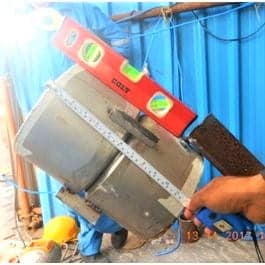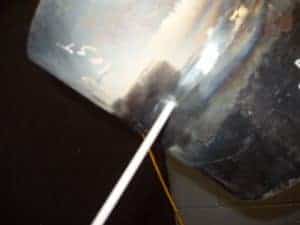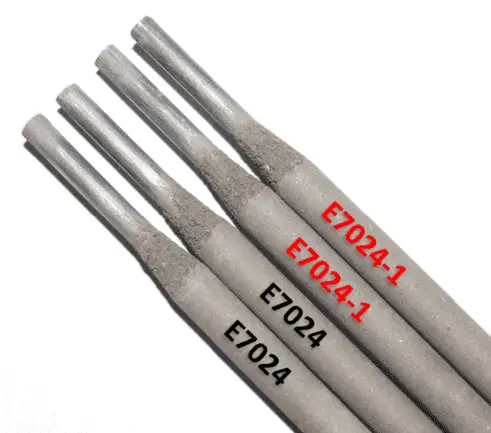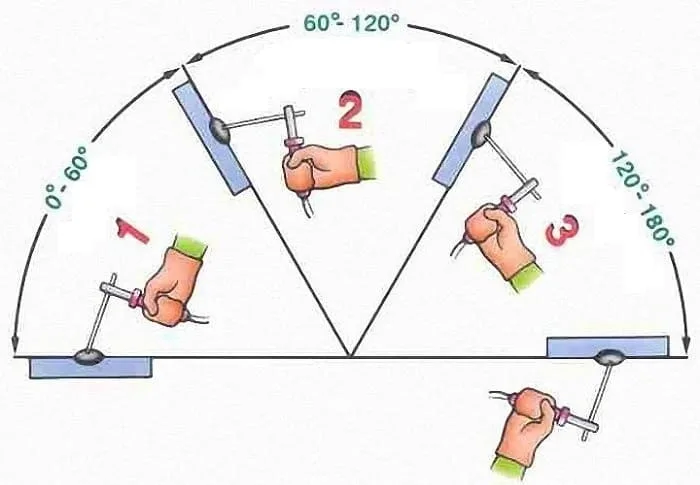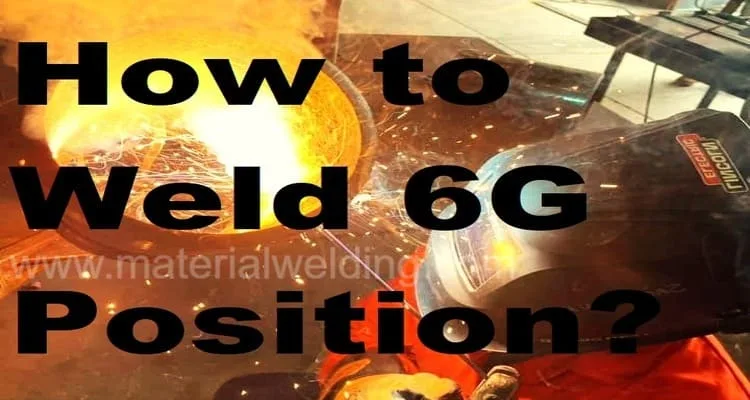How do you weld a 5G welding position pipe?
5G welding (Fixed horizontal position) is a tough row to hoe as it involves welding in flat, vertical, and overhead welding positions in a single weld joint.
The position is not very efficient in terms of weld deposition and welder comfortable. But when welding oil & gas pipelines of large pipe diameters and lengths, it’s not an option to weld in any other position except 5G.
Pipeliners have to opt for the 5G welding position only. You can also find 5G welding position situations in oil refineries and power plants where piping comprises a major chunk of welding activities. Many welding activities during shutdown, repairs & maintenance tasks have this welding position.
Above these welding, activities require the welder to be trained and certified as 5G Welder with skills to weld in uphill & downhill progression.
A welder’s skill in performing a satisfactory weld involves:
- Striking the arc,
- Maintaining a short and steady arc length,
- Making a suitable weaving motion when required and
- Traversing the joint at the correct speed of arc travel.
The arc is struck by hitting or scratching the striking end of the electrode against the joint surface. The electrode is held at a suitable angle with respect to the work and the line of the joint, depending on the type of joint and position of welding.
The arc may be traversed along a straight line without a weaving motion, or it may be weaved sideways. A bead deposited without weaving is termed a stringer bead, while that deposited with weaving is termed a weave bead.
At the end of the weld run, the arc is made to linger momentarily to fill up the arc crater, and the electrode is withdrawn suddenly to extinguish the arc.
A welder’s competence to produce defect-free welds depends largely on his ability to maintain a correct weaving motion according to the type of electrode, type of joint, and position of welding.
A correctly executed weaving motion takes care of penetration; sidewall fusion; shape, size, and profile of the bead; freedom from undercut, overlap, and slag inclusions; ease of slag removal.
Weaving also reduces or eliminates weld-metal porosity by giving a stirring motion to the molten weld pool and releasing the entrapped gases.
What is a 5G Welding Position?
5G Welding position is a groove welding position used mainly by the pipeliners for pipeline welding, applicable only for pipes & tubular shapes.
5G Welding position is not applicable for plate groove welding & fillet welding. 5G Welding position is a special welding position for pipes where it is not possible to rotate those pipes. An example is oil & gas pipelines or laying the pipelines in the sea as well as pipelines welding in plants, offshore structures, etc.
A 5G Welding position involves performing the welding in different welding positions, or we can say 5G is a combination of the following weld positions, that take place during the welding (shown in the below figure):
- Flat
- Vertical &
- Overhead
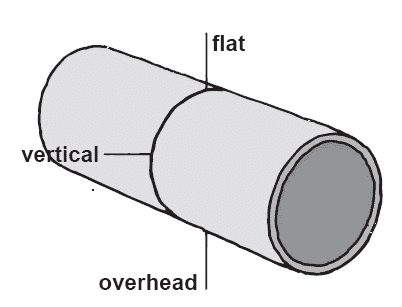
5G Pipe Welding Position
5G Welding position (Horizontal fixed welding position for pipe) is a pipe welding position and not applicable for plates as discussed above. In a 5G welding position, the pipe remains in a horizontal position and is not rotated.
The pipe positioning is similar to the 1G position however, in the 1G position pipe rotates/ turns on its horizontal axis.
Here in the case of the 5G position, the pipeliner welder moves around the pipe with a vertical progression to complete the welding.
The pipe axis is horizontal in the 5G position and the weld face is vertical.
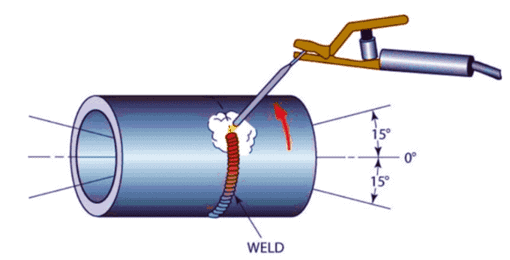
5G plate Welding Position
5G welding position is applicable only for tubular connections (Pipe, round bar). Hence, there is no 5G position for plates.
Using the 5G position for the plate is wrong. Check the below links to learn about the Plate Welding positions.
Welding positions for plate & pipe and their qualification range
5G welding test & 5G Welder Certification
5G Welding position test is performed according to the ASME Section IX for vessels, piping, utility, or as per API 1104 for oil & gas pipelines, or AWS D1.1 for structural welders. In the USA, 5G welders are qualified as per the AWS Certification.
A welder can take the test at any Accredited Test Facility (ATF) by AWS. Companies perform welder qualification tests as per ASME Section IX, API 1104, or AWS D1.1 Code to suit their individual requirements.
5G vs 6G Welding Position
The main difference between the 5G Welding position & 6G Welding position is the angle of the pipe axis. In 6G, the pipe is placed at a 45° angle while in the 5G position, the pipe is positioned at the horizontal axis.
6G welding is hence more difficult compared to 5G. Another variant of the 6G welding position is the 6GR welding position which is used for offshore structures mainly.
Check the below link to learn more about the 6GR Welding Position.
What is 6GR welding Test position? 6GR welding test tips and welder qualification
Both 5G & 6G positions are applicable only for pipes and not for plates.
5G Position Stick Welding Position Setting
- Electrode for root run welding: E6010/ E7010, Diameters 3/32 inches
- Welding Polarity: DCEP
- Welding amperage: 50 Amps to 80 Amps.
- Fill & capping: E7018, Diameter 5/32 inches, DCEP Polarity
5G Welding Position Pipe Welding Tips & Techniques
- Tack welds the pipe at 3,6, 9 & 12 o’clock positions.
- Important: Weld your hardest position first (bottom side). Weld the root run using stringer beads in an uphill progression or downhill as per the approved welding procedure.
- Start the welding arc from the weld root & not from the edge of the tacking position.
- The root with maximum weld gap or uneven weld gap should be welded in an uphill progression.
- Always try to use an upward welding rod angle.
- Always start before the weld endpoint/ weld crater (start approximately ½ inch before the crater). This will help to provide a good fusion at the weld start and fill the weld crater.
- Master yourself with different welding weaving techniques. They are essential when welding fill & capping passes.
Welding 5G Position Stick Welding Root Run
Most pipeliners start the root run from the 5 o’clock position using vertical uphill weld progression.
Many welders also weld downhill where they start the welding from the 11 o’clock weld position. The weld beads are placed using stringer beads.
When welding large-diameter pipes, it requires a number of start-stop points compared to smaller diameter pipes.
Make sure to start the bead slightly before the weld finishing end, that will give a weld overlap and help to fill the crater as well as any grinding depth that is induced while making way for weld start.
Refer to below figure on placing root run beads sequence.
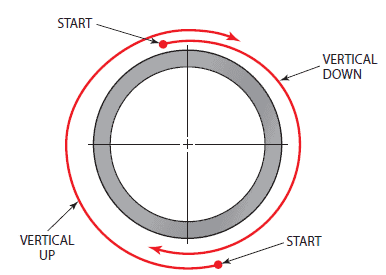
5G Welding Position Fill Pass welding Tips & Techniques
Fill pass or also hot pass welding is carried out either using cellulose types rod (E7010-G, E8010-G, E7018, etc.).
Electrode diameters of 1/8 inches or 3/16 inches are used for hot pass & capping. Start the hot pass at 12 o’clock position & welding towards 6 o’clock when welding downhill progression.
Keep a welding arc length equal to the rod dia. In case of weld interruption, clean the weld fully, start before the crater approximately ½ inch, and use normal arc length.
You should use higher amperage during hot pass welding that will pull out any slag that might create slag inclusion. A weld weaving pattern for hot pass welding is shown below.
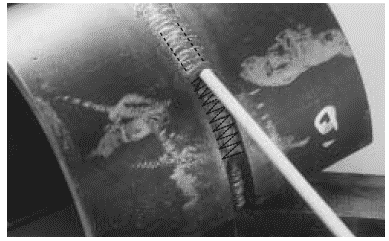
What is Pancake hood-why welders use pancake hood?
5G Welding Position Fill Capping Welding Tips & Techniques
You can weld the cap passes by two techniques:
- Using only stringer beads
- Using weaving beads
The examples for capping techniques are given in the below sketches:
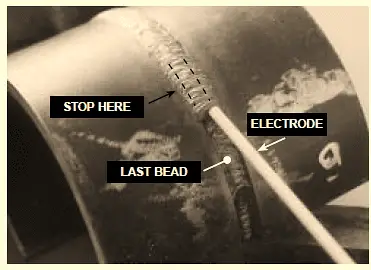
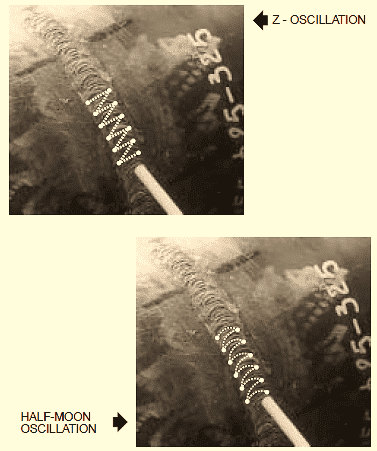
Why Do Pipeliners Weld Downhill?
Pipeliners uses cellulose-type welding rod (E6010/ E7010) for welding. This rod allows welding in uphill or downhill progression.
A downhill weld progression offers better-molten metal flow compared to uphill. Making downhill welds increase welding productivity as it is faster & require less handling of the molten pool.
You must follow your approved welding procedure to choose either Downhill or Uphill. Many welders also found downhill welding easier compared to welding uphill.
Welding uphill will slow down the welder speed, thus more heat accumulation in the pipe. In such cases, uphill weld is not suited for thin wall piping and the best choice is to use downhill which is faster and easier with lower heat in the pipe during welding.
E6010 Electrode Specification & its meaning
5G TIG Welding Parameters
5G TIG welding is easier than welding 5G Stick Welding. If you are a good TIG welder, it is not much difficult for you to weld 5G TIG welding.
The most difficult part with tig is welding the bottom side (overhead zone). So, don’t bother if you have to kneel down so you can see what you are welding.
The key is repetition, practice, patience, and having the pipe at a comfortable height.
The most important parameter to get right when welding is the amperage, as it determines the weld bead size and penetration.
Too little amperage and the weld won’t penetrate the material properly, while too much amperage can lead to excessive heat input and distortion of the material.
The gas flow rate also needs to be set correctly, as it determines how much shielding gas is delivered to the weld pool.
If there’s not enough shielding gas, then porosity can develop in the weld bead.
Finally, you also need to set the correct voltage for your application; too low a voltage will result in a poor-quality weld, while too high a voltage can cause excessive spatter.

